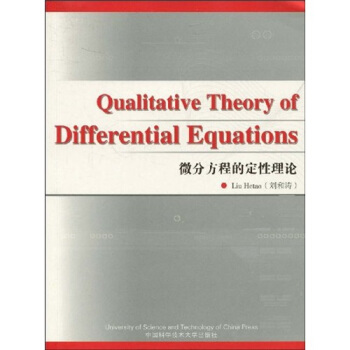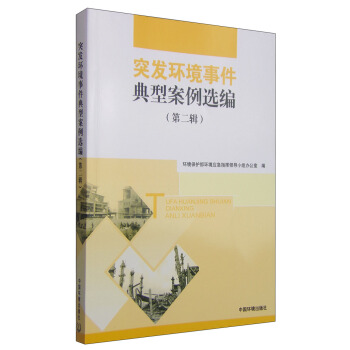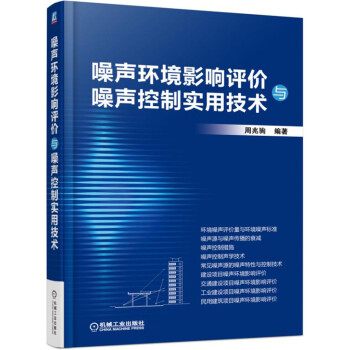

具体描述
内容简介
书中主要讲解了微分方程理论的基本方法,对微分方程的存在性、连续依赖性、稳定性、周期解、自治微分系统、动力系统等基本问题进行详细分析,并注重理论间的联系。《微分方程的定性理论》基础性强、应用广泛,是一本适合大学高年级选修课、研究生双语教学以及读者自学的英文教科书。作者简介
刘和涛,教授,留美执教数十年,曾在培生教育等国际著名、出版机构出版过多种教材,为美国多所院校采用。本教材秉承了国外先进教学理念,并针对国内学生实际情况,尤其注、意了由浅入深的理论过渡,建立了完备的逻辑体系,语言地、道,是适合于双语教学的优秀教科书,亦适合学生自学。目录
PrefaceChapter 1 A Brief Description
1. Linear Differential Equations
2. The Need for Qualitative Analysis
3. Description and Terminology
Chapter 2 Existence and Uniqueness
1. Introduction
2. Existence and Uniqueness
3. Dependence on Initial Data and Parameters
4. Maximal Interval of Existence
5. Fixed Point Method
Chapter 3 Linear Differential Equations
1. Introduction
2. General Nonhomogeneous Linear Equations
3. Linear Equations with Constant Coefficients
4. Periodic Coefficients and Floquet Theory
Chapter 4 Autonomous Differential Equations in R2
1. Introduction
2. Linear Autonomous Equations in R2
3. Perturbations on Linear Equations in R2
4. An Application: A Simple Pendulum
Chapter 5 Stability
1. Introduction
2. Linear Differential Equations
3. Perturbations on Linear Equations
4. Liapunovs Method for Autonomous Equations
Chapter 6 Periodic Solutions
1. Introduction
2. Linear Differential Equations
3. Nonlinear Differential Equations
Chapter 7 Dynamical Systems
1. Introduction
2. Poincare-Bendixson Theorem in R2
3. Limit Cycles
4. An Application: Lotka-Volterra Equation
Chapter 8 Some New Equations
1. Introduction
2. Finite Delay Differential Equations
3. Infinite Delay Differential Equations
4. Integrodifferential Equations
5. Impulsive Differential Equations
6. Equations with Nonlocal Conditions
7. Impulsive Equations with Nonlocal Conditions
8. Abstract Differential Equations
Appendix
References
Index
精彩书摘
The study of linear differential equations is very important for the fol-lowing reasons. First, the study provides us with some basic knowledgefor understanding general nonlinear differential equations. Second, manynonlinear differential equations can be written as summations of linear dif-ferential equations and some small nonlinear perturbations. Thus, undercertain conditions, the qualitative properties of linear differential equationscan be used to infer essentially the same qualitative properties for nonlineardifferential equations.前言/序言
Differential equations are mainly used to describe the changes of quanti-ties or behavior of certain systems in applications, such as those governedby Newtons laws in physics.When the differential equations under study are linear, the conventionalmethods, such as the Laplace transform method and the power series solu-tions, can be used to solve the differential equations analytically, that is, thesolutions can be written out using formulas.
When the differential equations under study are nonlinear, analytical so-lutions cannot, in general, be found; that is, solutions cannot be writtenout using formulas. In those cases, one approach is to use numerical ap-proximations. In fact, the recent advances in computer technology makethe numerical approximation classes very popular because powerful softwareallows students to quickly approximate solutions of nonlinear differentialequations and visualize their properties.
However, in most applications in biology, chemistry, and physics mod-eled by nonlinear differential equations where analytical solutions may beunavailable, people are interested in the questions related to the so-calledqualitative properties, such as: will the system have at least one solu-tion? will the system have at most one solution? can certain behavior ofthe system be controlled or stabilized? or will the system exhibit some peri-odicity? If these questions can be answered without solving the differentialequations, especially when analytical solutions are unavailable, we can stillget a very good understanding of the system. Therefore, besides learningsome numerical methods, it is also important and beneficial to learn howto analyze some qualitative properties.
用户评价
坦白说,在翻阅《Qualitative Theory of Differential Equations》之前,我对“定性分析”这个概念并没有一个非常清晰的认知,总觉得它与我日常接触的数值求解、解析解法有所不同。但这本书彻底改变了我的看法。作者以一种非常“艺术”的方式,向我们展示了如何从解的“形状”和“走向”来理解方程的本质。我被书中关于奇点分类的详细阐述所震撼,原来一个简单的平面自治方程,其奇点的类型就能预示着系统行为的巨大差异。书中的证明过程,虽然严谨,但并没有显得枯燥乏味,反而充满了逻辑的魅力,让我不由自主地想要跟随作者的思路去探索。我经常会在阅读的时候,在纸上画出书中的相图,试图去“感受”解的运动轨迹,这种体验是非常独特的。这本书让我深刻体会到,数学不仅仅是计算的工具,更是一种理解世界、描绘规律的语言。
评分《Qualitative Theory of Differential Equations》这本书,绝对是为那些想要超越“解方程”这一层面、去理解微分方程背后“生命力”的读者量身定做的。作者的笔触非常细腻,他不仅仅是在介绍数学工具,更是在传达一种思考方式。我被书中对于“结构稳定性”的讨论深深吸引,理解为什么微小的参数扰动可能导致系统行为发生剧烈变化,这是理解真实世界中许多系统脆弱性的关键。书中关于分岔理论的阐述尤其精彩,通过对一些经典分岔(如鞍结分岔、Hopf分岔)的详尽分析,我开始理解看似随机的现象背后是如何由参数控制的。我脑海中立刻浮现出许多工程上的例子,比如控制系统的稳定性边界,或者生物种群数量的突然爆发或衰退,这些都可以用分岔理论来解释。这本书的价值在于,它提供了一个通用的框架,让我们可以从更宏观、更本质的角度去审视各种动态过程,而不仅仅是局限于某个具体的模型。
评分说实话,一开始拿到《Qualitative Theory of Differential Equations》的时候,我以为会是一本非常晦涩难懂的教材,毕竟“定性理论”这个词本身就带着一丝玄妙。然而,这本书的叙述方式却出乎意料地清晰和易于理解。作者非常擅长将复杂的数学思想分解成易于消化的小块,并且循序渐进地引导读者进入核心概念。我特别喜欢他在讲解李雅普诺夫稳定性理论时所采用的方法,他通过引入“能量函数”这样的直观概念,来解释系统是如何趋向平衡点的,这比单纯的数学推导要容易理解得多。书中的插图和图示也起到了画龙点睛的作用,它们清晰地展示了相空间的几何结构,以及不同类型奇点和极限环的性质。我花了不少时间仔细研究这些图,它们帮助我构建了对微分方程解的整体“图像”,而不仅仅是孤立的数值结果。虽然我目前还没有完全深入到书中更高级的部分,但仅是前面的内容,就已经极大地拓宽了我对动态系统行为的认识,也让我对接下来的学习充满了期待。
评分这本《Qualitative Theory of Differential Equations》真的让我印象深刻,虽然我购买它的初衷更多是出于研究的需要,希望能够深入理解一些复杂系统的行为模式,但阅读过程中的收获远超预期。书中的论证逻辑严谨,层层递进,即使是对于一些抽象的概念,作者也能通过精妙的引导,让读者逐渐茅塞顿开。我尤其欣赏作者在处理非线性微分方程时的视角,他并没有仅仅停留在求解的层面,而是着重于揭示方程解的整体行为,比如吸引子、周期轨道、分岔等。这些概念在许多物理、工程甚至生物学领域都有着至关重要的应用,而这本书提供了一个非常扎实的理论基础。我记得其中有一章节详细讨论了洛伦兹吸引子的形成机制,那种“混沌”背后隐藏的有序性和对初始条件的敏感性,被解释得淋漓尽致。读完之后,我感觉自己对“确定性混沌”有了更深层次的认识,这对于我目前正在进行的一个关于气候模型的研究非常有启发。而且,书中穿插的例证也相当丰富,不是那种枯燥的纯理论堆砌,而是通过具体的例子来印证和深化理论。
评分这本书《Qualitative Theory of Differential Equations》给我带来的不仅仅是知识的增益,更是一种思维的革新。作者在处理一些经典问题时,往往会从一个全新的角度切入,引发我对自己原有认知的反思。例如,在探讨周期解的存在性时,他并非直接给出存在性定理,而是通过分析相空间的拓扑结构,以及引入诸如庞加莱-本迪克森定理这样的强大工具,来证明周期轨道的必然性。这个过程非常具有启发性,让我看到了数学的逻辑之美和深度。我尤其赞赏作者在全书的叙事节奏上把握得非常好,不会让人感到信息过载,也不会过于拖沓。每一个概念的引入都显得恰到好处,并且与前后的内容紧密相连,形成一个有机的整体。读这本书的过程,就像是在进行一场智力探险,每一个章节都像是一个新的发现,让我对微分方程的定性理论有了前所未有的透彻理解。
评分不错不错不错不错不错不错不错不错不错不错不错不错不错不错不错不错不错不错不错不错不错不错
评分还可以,英文不行的就免了哈哈哈
评分还可以,英文不行的就免了哈哈哈
评分还可以,英文不行的就免了哈哈哈
评分还可以,英文不行的就免了哈哈哈
评分不错不错不错不错不错不错不错不错不错不错不错不错不错不错不错不错不错不错不错不错不错不错
评分不错不错不错不错不错不错不错不错不错不错不错不错不错不错不错不错不错不错不错不错不错不错
评分不错不错不错不错不错不错不错不错不错不错不错不错不错不错不错不错不错不错不错不错不错不错
评分不错不错不错不错不错不错不错不错不错不错不错不错不错不错不错不错不错不错不错不错不错不错
相关图书
本站所有内容均为互联网搜索引擎提供的公开搜索信息,本站不存储任何数据与内容,任何内容与数据均与本站无关,如有需要请联系相关搜索引擎包括但不限于百度,google,bing,sogou 等,本站所有链接都为正版商品购买链接。
© 2025 windowsfront.com All Rights Reserved. 静流书站 版权所有








![高等数学中的若干问题与方法 [Some Problems and Methods of Higher Mathematics] pdf epub mobi 电子书 下载](https://pic.windowsfront.com/11729531/55c162e4N88da7047.jpg)
![大气气溶胶偏振遥感 [Atmospheric Aerosol Polarized Remote Sensing] pdf epub mobi 电子书 下载](https://pic.windowsfront.com/11779700/564e9115Ne1bd2c8d.jpg)




![数学与金融经典教材:一般平衡态的理论与证明(影印版)(英文版) [General Equilibrium Theory and Evidence] pdf epub mobi 电子书 下载](https://pic.windowsfront.com/11273586/rBEhWlHdNd0IAAAAAAKLos-rbXcAAA7LgPQsOAAAou6146.jpg)





